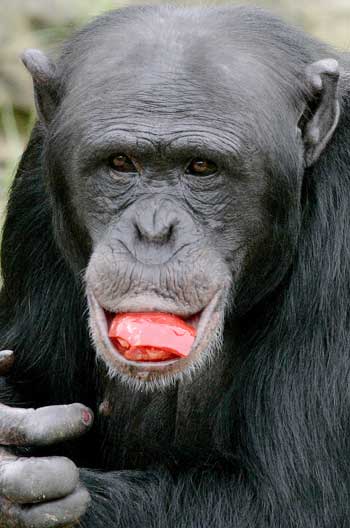Stop caricaturing chimps, advertisers told

They have been used to sell everything from tea bags to bicycles and designer watches but the days of showing chimpanzees in TV commercials could be numbered, if a group of leading scientists gets its way.
The primatologists, who include the world-famous Jane Goodall, have attacked the advertising industry for exploiting chimps as "frivolous subhumans" who can be viewed as objects of fun and ridicule for the sake of commercial gain.
Dressing up chimps in human clothes or making them perform everyday activities gives people the impression that they are not a species in danger of extinction, yet they are just as threatened as the gorilla or the orang-utan, the scientists said.
They want the practice banned and their argument has been so effective that they have managed to convince the publishers of the journal Science to withdraw its own series of adverts showing chimps reading the respected publication.
In an article in the current issue of Science, the researchers point to a study showing that the use of chimps in advertising can be linked directly to a common misperception by the public about the true status of the apes as an endangered species, said Stephen Ross, a primatologist at the Lincoln Park Zoo in Chicago. "What is perceived to be harmless fun really has serious consequences. The most common reason why people thought that chimps were not in the endangered species category is because they were seen on television, advertisements and movies and must therefore not be in jeopardy," Dr Ross said.
Chimps have been a common feature in TV commercials for the past 50 years and their role is best remembered in the long-running ads for PG Tips tea, where they were dressed up in human clothes and made to perform human activities. More recently chimps have been shown wearing nappies, riding bikes and driving taxis.
A survey of more than 1,000 zoo visitors found more than 90 per cent of them realised that gorillas and orang-utans were endangered but only 72 per cent thought chimps were an endangered species.
"Of the 250 respondents who were willing to provide explanations for their choice, the most common reason for the category chosen – 35 per cent – was that chimpanzees were commonly seen on television, advertisements and movies and therefore must not be in jeopardy," they said.
However, in reality chimpanzees have suffered a catastrophic decline in the wild and current estimates suggest the species could be extinct within the next several decades if current declines in its population continue.
Dr Ross said that using chimps in advertisements and entertainment had a darker side. Almost all of the chimps used are juveniles taken away from their mothers at an early age – adult chimps are too big and powerful to train.
"When people come to our zoo they were surprised at how big our chimps are. That is because they were used to seeing juvenile chimps under six years of age in TV commercials. They've just got the wrong impression," Dr Ross said.
Join our commenting forum
Join thought-provoking conversations, follow other Independent readers and see their replies
Comments
Bookmark popover
Removed from bookmarks